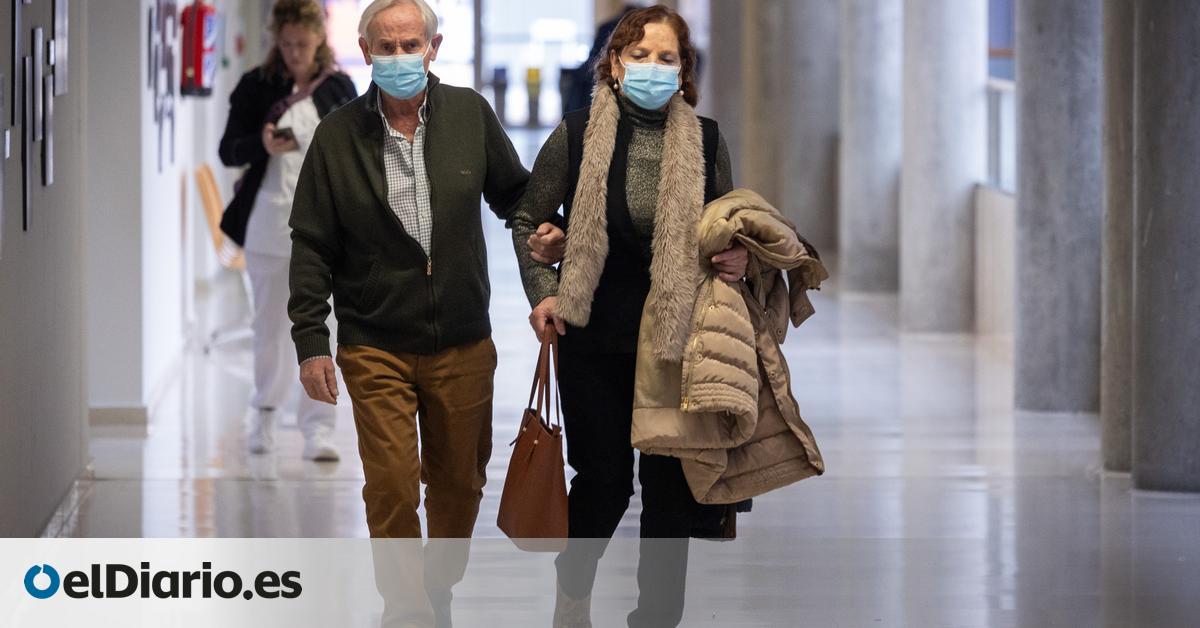
The cold has arrived in Spain and, with it, the best conditions for respiratory viruses to spread. However, the opposition of the PP communities has made the first plan of common actions to prevent infections in the winter season unviable. After almost two months in the air, the Ministry of Health has given up approving it due to the lack of support from the ministries managed by the conservatives, confirm sources immersed in the negotiations of the plan, which was debated for the first time in mid-October. The strategy will finally be published as a decalogue of recommendations when the case curve begins to behave as expected for this time of year. The rise, however, is still slow.
The idea of this consensual plan was to overcome the chaos that was experienced last year: Health and the communities entered into an intense tug of war that ended with the imposition of the mask in health centers. By the time the measure came into force, the peak of infections had already been surpassed. “It’s about acting before, not when the curve is rising exponentially because that can bring us complications,” said the minister of the sector, Mónica García, after the summer. Last season there was “very intense” flu activity.
To avoid repeating the disagreement and act in time, the Center for the Coordination of Health Alerts and Emergencies (CCAES) called on technicians from the communities who wished to do so to start working on a joint strategy. Eight participated, including territories governed by the PP such as Galicia, Castilla y León, the Valencian Community or Murcia. The result of this choral work at a technical level, however, has ended up being aborted at the political level and the disagreement hinders, at least this season, the communities from acting in a coordinated manner when the circulation of flu, Covid-19 and viruses intensifies. respiratory syncytial (RSV).
A slow rise in cases
Spain fully enters the winter cold this week with a level of infections that is not yet worrying. The latest report from the Carlos III Health Institute, corresponding to week 48, places the rate of acute respiratory infections (ARIs) at 516.7 cases per 100,000 inhabitants. In the same week last year the figure rose to 674.8 cases. The hospitalization rate stands at 12.7 cases, two tenths more than the previous week. The rise has been noticeable for four weeks and it is expected that it can accelerate during the Christmas celebrations.
By virus type, flu syndrome is associated with 15.5 cases per 100,000 inhabitants (14.3 in the previous week) and Covid-19 with 5.7 (5.8 in the previous report). Bronchiolitis and bronchitis in children under five years of age, caused by the respiratory syncytial virus (RSV), is the highest rate and is escalating the fastest: 429.9 cases compared to 373.6 the previous week. Although transmission is high, it is the second season that the portfolio of services includes a drug that confers immunity against it and is supported by “spectacular results” after the first immunizations: hospitalization rates were reduced between 71 and 77% . Between 7,500 and 10,200 admissions were avoided.
Health has not tried to debate the matter again in the Public Health Commission. The last time, in October, it encountered resistance from the conservative territories despite the fact that its technicians, at a lower level, had approved the strategy in the Alerts Presentation. The argument of Madrid, the Canary Islands and Castilla y León, which most actively showed their opposition, was that the document was “immature.”
The plan was devised as a tool similar to the coronavirus traffic light with gradual actions as the incidence increased, although the thresholds to move from one scenario to another were not set at the national level – they were calculated by each community based on a series of indicators such as incidence, ICU occupancy or detection in Primary Care – and depended on the application of each health advisory. It contained four scenarios that recommended the use of a mask from people with symptoms – at the lowest level of contagion – to the elderly and chronically ill in indoor spaces such as supermarkets, stores, public transport or cinemas.
Source: www.eldiario.es

